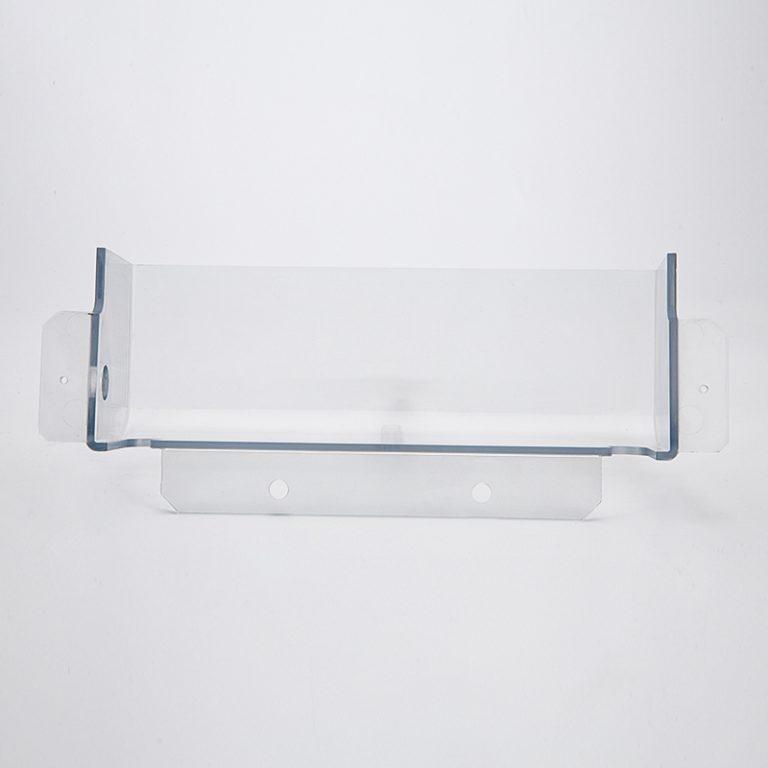Table of Contents
Benefits of Using Plastic Components in Automotive Manufacturing
Plastic components and modules play a crucial role in the automotive industry, offering a wide range of benefits that make them a popular choice for manufacturers. From improved fuel efficiency to enhanced safety features, plastic components have revolutionized the way vehicles are designed and built.
One of the key advantages of using plastic components in automotive manufacturing is their lightweight nature. Compared to traditional materials like metal, plastic is significantly lighter, which can help improve fuel efficiency and reduce emissions. By incorporating plastic components into a vehicle’s design, manufacturers can create lighter, more aerodynamic vehicles that require less energy to operate.
In addition to their lightweight properties, plastic components are also highly durable and resistant to corrosion. This makes them an ideal choice for use in various automotive applications, from interior trim pieces to exterior body panels. Plastic components are able to withstand harsh weather conditions, road debris, and other environmental factors, ensuring that they remain in top condition for years to come.
Furthermore, plastic components offer a high degree of design flexibility, allowing manufacturers to create complex shapes and intricate designs that would be difficult or impossible to achieve with traditional materials. This flexibility enables designers to push the boundaries of automotive design, creating vehicles that are not only visually appealing but also highly functional and efficient.
Another benefit of using plastic components in automotive manufacturing is their cost-effectiveness. Plastic is a relatively inexpensive material compared to metal, making it a cost-effective option for manufacturers looking to reduce production costs without sacrificing quality. By using plastic components, manufacturers can streamline the manufacturing process, reduce waste, and ultimately lower the overall cost of producing vehicles.

Plastic components also offer a high degree of customization, allowing manufacturers to tailor their designs to meet specific performance and aesthetic requirements. Whether it’s creating a sleek, modern interior or designing a rugged, off-road exterior, plastic components can be molded and shaped to fit virtually any design concept.
In addition to their performance and cost benefits, plastic components also offer environmental advantages. Plastic is a recyclable material, making it a sustainable choice for manufacturers looking to reduce their environmental impact. By using recycled plastics in automotive manufacturing, manufacturers can help reduce waste and conserve natural resources, making the automotive industry more sustainable in the long run.
Overall, the benefits of using plastic components in automotive manufacturing are clear. From improved fuel efficiency and durability to cost-effectiveness and design flexibility, plastic components offer a wide range of advantages that make them an essential part of modern vehicle design. As technology continues to advance, we can expect to see even more innovative uses of plastic components in the automotive industry, further enhancing the performance, safety, and sustainability of vehicles around the world.
How to Choose the Right Plastic Modules for Automotive Applications
Plastic components and modules play a crucial role in the automotive industry, providing lightweight, durable, and cost-effective solutions for a wide range of applications. From interior trim panels to under-the-hood components, plastic modules are used in various parts of a vehicle to enhance performance, safety, and aesthetics. However, with so many options available on the market, choosing the right plastic modules for automotive applications can be a daunting task. In this article, we will discuss some key factors to consider when selecting plastic modules for automotive use.
One of the most important considerations when choosing plastic modules for automotive applications is the material used in their construction. Different types of plastics offer varying levels of strength, flexibility, and heat resistance, making some more suitable for specific applications than others. For example, high-temperature plastics such as polyphenylene sulfide (PPS) are ideal for under-the-hood components that are exposed to extreme heat, while impact-resistant plastics like acrylonitrile butadiene styrene (ABS) are better suited for interior trim panels that may be subject to frequent impacts.
In addition to the material used, it is also essential to consider the design and manufacturing process of the plastic modules. Complex geometries, tight tolerances, and intricate features can all impact the performance and durability of a plastic module. Therefore, working with a reputable manufacturer that has experience in designing and producing plastic modules for automotive applications is crucial to ensuring the quality and reliability of the final product.
Another important factor to consider when choosing plastic modules for automotive applications is their compatibility with other components in the vehicle. Plastic modules must be able to withstand the harsh conditions of the automotive environment, including exposure to heat, cold, moisture, and chemicals. Additionally, they must be able to integrate seamlessly with other components to ensure proper functionality and performance. Therefore, it is essential to test the compatibility of plastic modules with other parts of the vehicle before finalizing the design and production process.
| Material selection | size |
| ABS/PET/PEEK/ETC. | customization |
Cost is also a significant consideration when selecting plastic modules for automotive applications. While plastic modules are generally more affordable than metal or other materials, the cost can vary depending on the type of plastic used, the complexity of the design, and the manufacturing process. It is essential to balance cost considerations with performance requirements to ensure that the chosen plastic modules meet the needs of the application without exceeding the budget.
In conclusion, choosing the right plastic modules for automotive applications requires careful consideration of several key factors, including the material used, design and manufacturing process, compatibility with other components, and cost. By taking these factors into account and working with a reputable manufacturer, automotive engineers can ensure that the plastic modules they select will meet the performance, durability, and cost requirements of their application. With the right plastic modules in place, vehicles can benefit from lightweight, durable, and cost-effective solutions that enhance performance, safety, and aesthetics.




